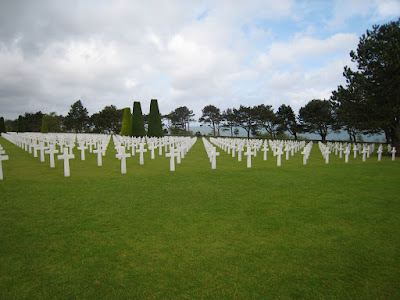5-3-07 SHORT HILLS: The first one to show up today was the fence guys who did the annual repair of about eight posts and twenty rails that had rotted out since last spring. While they were working the gutter cleaners arrived. They use blowers and hoses to clean the gutters and then cleaned up all the stuff they scattered down on the shrubs. The sprinkler repair team arrived next, but had to leave and return because the gutter guys were using the water. They actually did come back and finished their repair job.
Yesterday, we saw the third part of “Voyage”, Tom Stoppard’s trilogy about nineteenth century Russian expats. I’ve had more than my fill of those characters after three episodes. We arrived early because the tunnel traffic was light and walked over to Central Park before dinner at Fiorello’s. The Park was a hive of activity. We got to look at some outcrops of Manhattan schist, all tightly folded in the east-west direction and plunging to the south. The schist is ancient ocean bottom mud and sand deposits compacted into mudstones and sandstones, and then heaved upward out of the ocean and metamorphosed into this folded schist by continental collison between North America and Africa in the Paleozoic.
Here is more about climate change from a NYT article today:
By the time of the annual Atlanta Dogwood Festival last month, the pale dogwood blooms had come and gone. Tara Dillard, a landscape designer and garden writer, said she now steers clients away from longtime favorites. “I’m writing a column about rhododendrons right now,” Ms. Dillard said. “And I think my conclusion is going to have to be not to plant rhododendrons. We have heated out of the rhododendron zone.”
In this warmer age, she said, “You might be planting some stuff you don’t like, like hollies.” But she brooks no objections from her clients. “I don’t care if you don’t like them,” she tells them. “I used to not like them either.”
David W. Wolfe, a professor of plant ecology at Cornell University, who spoke at a recent symposium at the Brooklyn Botanic Garden called “Gardening in a Changing Climate,” confirmed that in many places bellwether plants and animals were beginning to disappear. “There is clear evidence that the living world is responding to this change already,” Dr. Wolfe said.
Groups that cater to gardeners have hastened to keep up. In December, the National Arbor Day Foundation released an updated version of the United States Department of Agriculture’s Hardiness Zone Map, which shows the lowest winter temperatures in different parts of the country and is used by gardeners to determine which plants can survive in their yards.
Using data from the National Oceanic and Atmospheric Administration, the Arbor Day map indicates that many bands of the country are a full zone warmer, and a few spots are two zones warmer, than they were in 1990, when the map was last updated.
Atlanta, which was in Zone 7 in 1990, is now in Zone 8, along with the rest of northern Georgia. That means that areas in the northern half of the state where the average low temperature was zero to 10 degrees Fahrenheit are now in a zone where the average low is 10 to 20 degrees. A scientific consensus has concluded that this warming trend has largely been caused by the human production of heat-trapping gases.
The Agriculture Department is in the process of redoing the map itself. But critics have taken issue with the department’s decision to use 30 years of temperature data, saying it will result in cooler averages and fail to reflect the warming climate. The 1990 U.S.D.A. map used 13 years of data; the Arbor Day map used 15 years ending in 2004.
Cameron P. Wake, a climatologist at the Climate Change Research Center of the University of New Hampshire, said a 30-year period would include several cycles of multiyear effects like El Niño, with an underlying assumption that climate is stable and varies around a mean. Warming, on the other hand, “is not variability, it’s a long term trend,” Dr. Wake said. “I would say the U.S.D.A. doesn’t want to acknowledge there’s been change.”
So, the administration’s Aggie Dept is redoing the hardiness zones to minimize the effect of climate change. That is so Bush league. Hopefully, that Bush is on the brink of extinction. The article also pointed out that some thirty or so State trees and flowers are in danger of being zoned out of their states. Anyway, the rhododendron comment caught my eye because of all the problems we’ve had here, and I did prune a lot of dead stuff from another rhodo today.
Yesterday Judy spotted a duck in our elm tree. Yes, a duck. Actually a wood duck. They lay eggs in hollow trees and then push the hatchling out of the nest into water conveniently located under their tree. I assume they were passing through and won’t be moving in—no water. The bird feeder, by the way, has been extremely busy.
New blooms: lamium and in the sunroom, the hibiscus that Anita gave us last summer.

male wood duck

hibiscus





































